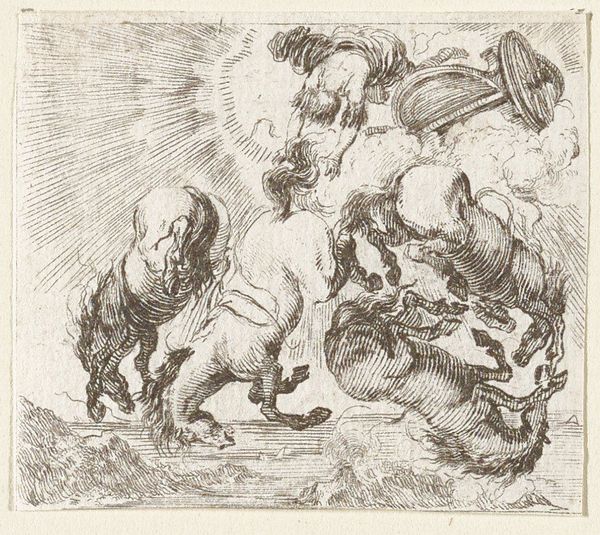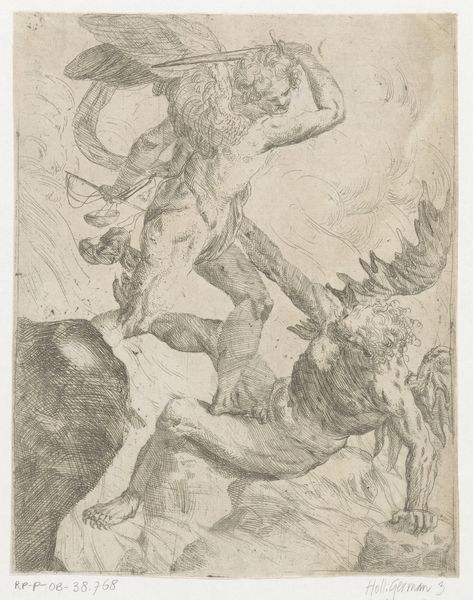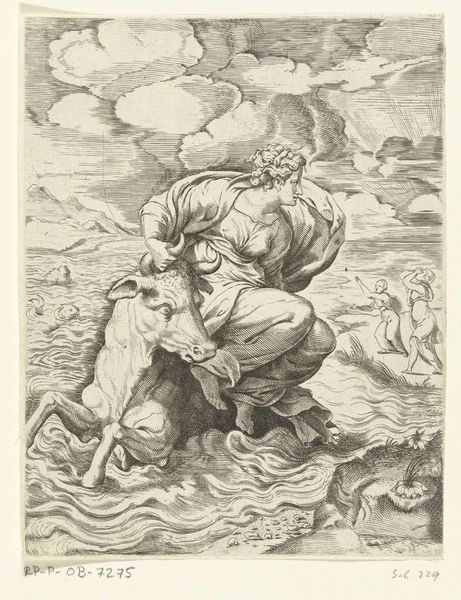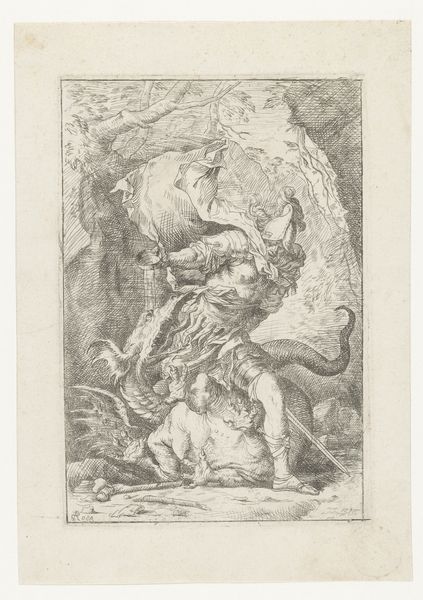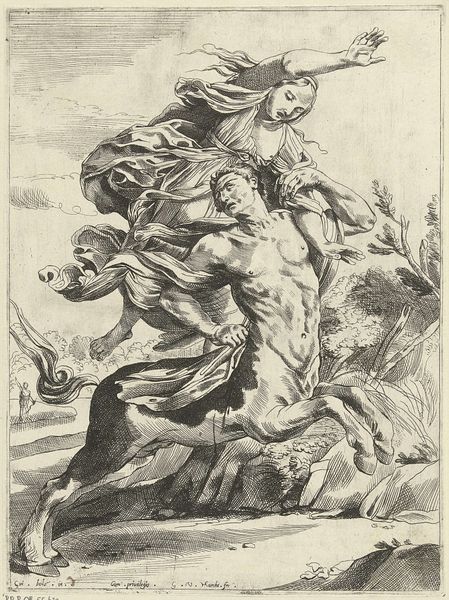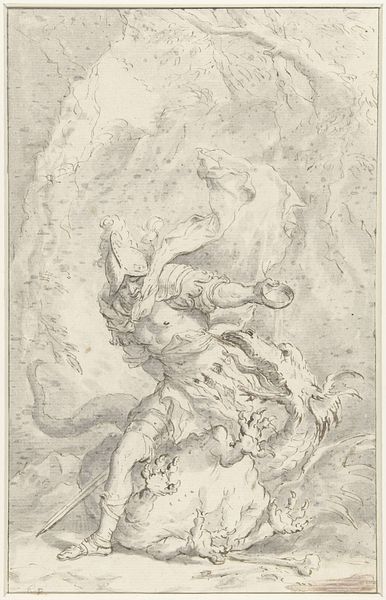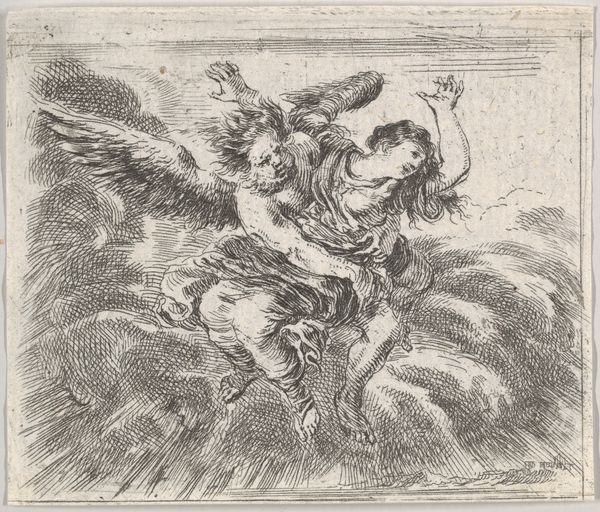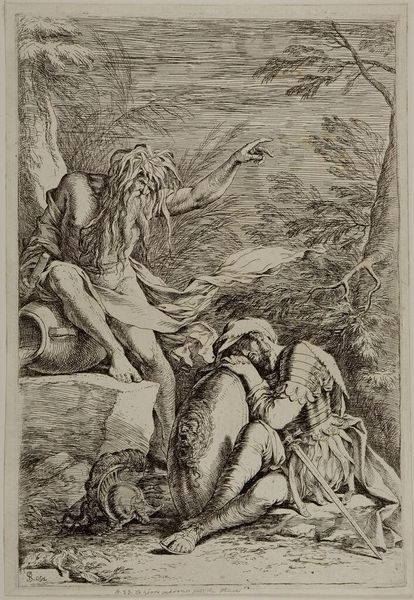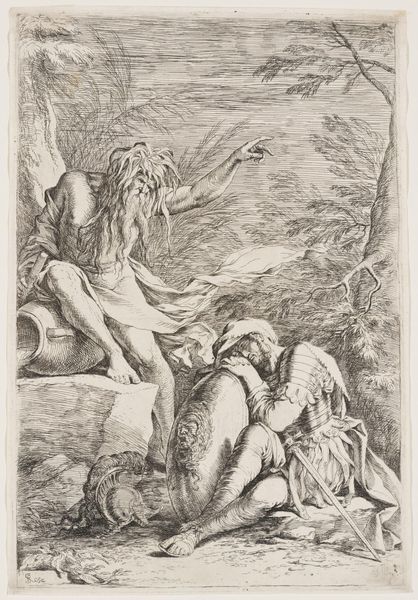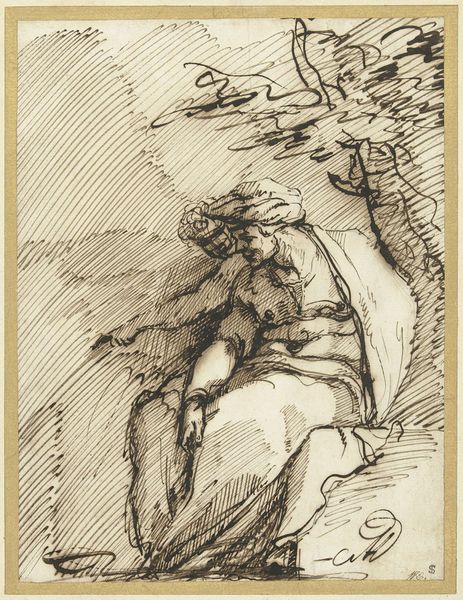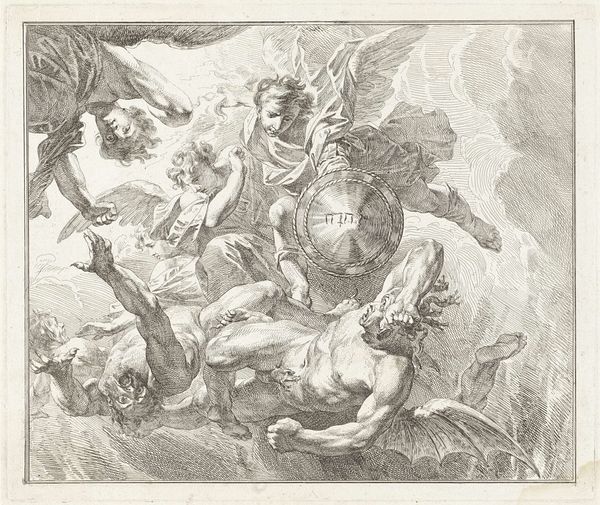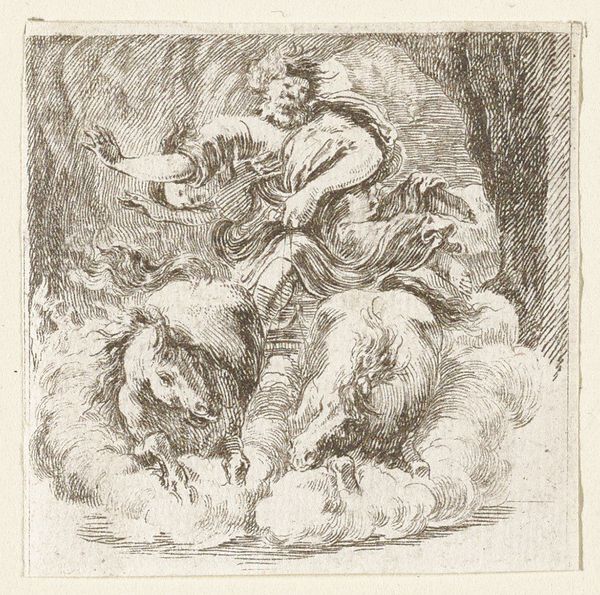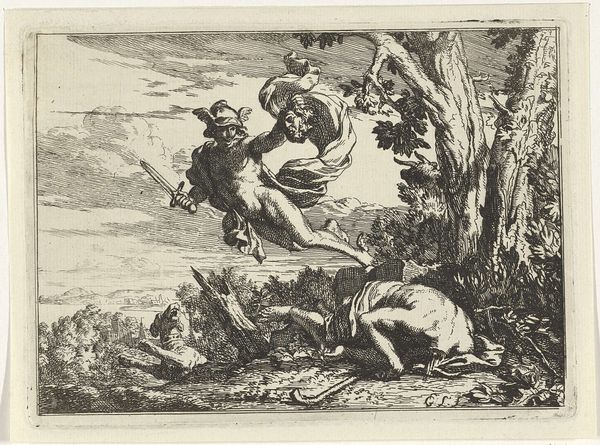
drawing, ink, engraving
#
drawing
#
narrative-art
#
baroque
#
pen drawing
#
pen illustration
#
pen sketch
#
pencil sketch
#
landscape
#
figuration
#
ink
#
pen work
#
genre-painting
#
engraving
Dimensions: height 110 mm, width 94 mm
Copyright: Rijks Museum: Open Domain
Louis de Deyster created this etching of a young man fleeing a sea monster sometime in the late 17th or early 18th century. This small Dutch print embodies a Northern European fascination with classical mythology. We see a nude figure from the back, scrambling up a rocky shore, away from a scaly, dragon-like creature emerging from the sea. The dramatic scene invites us to consider the social function of classical imagery in this period. The artist would have been trained in these visual codes in the drawing academies, themselves newly powerful institutions for the production and reproduction of art. Studying the classical past was considered essential to creating art with a public role and civic function. Art historians consult sources such as artist biographies, letters, and institutional records to understand the meaning and impact of works like this in their own time. The interpretation of art relies on its social and institutional context.
Comments
No comments
Be the first to comment and join the conversation on the ultimate creative platform.
